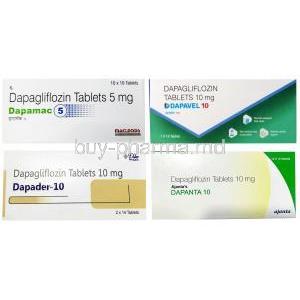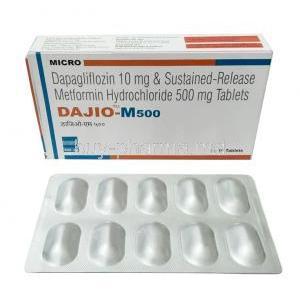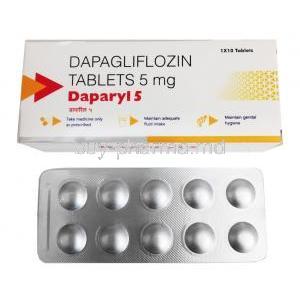1. Introduction to Glarvia Injection
Glarvia Injection is a long-acting insulin formulation used for the management of chronic hyperglycemia in individuals with diabetes mellitus. It belongs to the therapeutic class of insulin analogs, designed to mimic the body's basal insulin secretion over an extended period.
This preparation contains insulin glargine, a recombinant human insulin analog. Unlike short-acting insulins, Glarvia maintains a steady insulin level for approximately 24 hours, providing consistent glycemic control without pronounced peaks.
Comparable to branded options like Lantus and Basaglar, Glarvia offers a clinically equivalent alternative with proven efficacy. It is indicated for once-daily administration to manage blood glucose in patients with type 1 and type 2 diabetes, either as monotherapy or in conjunction with other agents.
2. Composition and Formulation Details
- Active ingredient: Insulin glargine (recombinant DNA origin)
- Concentration: 100 units/mL
- Excipients: Zinc, glycerol, polysorbate 20, m-cresol, sodium chloride, and water for injection
- Available forms: Vials, prefilled disposable pens, and cartridges compatible with reusable pen devices
3. Mechanism of Action: How Glarvia Injection Works
Glarvia's molecular structure is altered at the A21 and B30 positions of human insulin, rendering it less soluble at physiological pH. Upon subcutaneous administration, it forms microprecipitates in the subcutaneous tissue, releasing small amounts of insulin glargine slowly and continuously.
This design ensures a near-peakless insulin profile that sustains glucose-lowering effects for up to 24 hours. The insulin binds to insulin receptors on hepatic and peripheral tissues, inhibiting hepatic glucose production and promoting glucose uptake in muscle and fat cells.
4. Approved Medical Uses of Glarvia Injection
4.1 Type 1 Diabetes Mellitus
Glarvia is used as basal insulin therapy in individuals with type 1 diabetes. It is typically combined with rapid-acting insulins taken at mealtimes to simulate normal pancreatic insulin secretion.
4.2 Type 2 Diabetes Mellitus
In type 2 diabetes, Glarvia can be used as a monotherapy or in combination with oral hypoglycemic agents, GLP-1 receptor agonists, or mealtime insulins. It helps maintain long-term glycemic control in both newly diagnosed and insulin-experienced patients.
5. Off-Label and Investigational Uses
- Gestational diabetes: Used off-label under strict specialist supervision in pregnant women requiring basal insulin.
- Hyperglycemia in critical illness: Investigated as part of basal-bolus insulin strategies in intensive care settings.
- Hospitalized patients: Employed in combination with prandial insulin for precise glucose control.
- Pediatric use <6 years: Off-label dosing explored in clinical studies with cautious titration.
6. Dosage Guidelines and Administration Instructions
6.1 Standard Dosage Regimens
For insulin-naïve patients:
- Type 1 Diabetes: Approx. one-third to one-half of the total daily insulin dose as Glarvia, with the remainder as short-acting insulin.
- Type 2 Diabetes: Initial dose of 10 units once daily or 0.2 units/kg, with adjustments based on fasting glucose levels.
6.2 Administration Route and Timing
- Subcutaneous injection only—IV or IM administration is contraindicated.
- Inject into the thigh, upper arm, or abdominal wall; rotate injection sites regularly to avoid lipodystrophy.
- Administer once daily, at the same time each day, preferably in the evening.
6.3 Special Situations
- Renal or hepatic impairment: May require lower initial doses and gradual titration.
- Switching from other insulins: Dose adjustments are necessary to avoid hypoglycemia or hyperglycemia during the transition.
7. Common and Serious Side Effects of Glarvia Injection
7.1 Common Side Effects
- Hypoglycemia: The most frequent adverse effect, especially with dose mismatches or missed meals.
- Injection site reactions: Localized redness, swelling, itching, or lipoatrophy/lipohypertrophy.
- Weight gain: Often associated with insulin therapy due to anabolic effects and reduced glycosuria.
7.2 Serious Adverse Reactions
- Severe hypoglycemia: May present as seizures, unconsciousness, or confusion.
- Hypokalemia: Insulin may cause intracellular potassium shifts, leading to cardiac arrhythmias.
- Allergic reactions: Rare but potentially life-threatening hypersensitivity or anaphylactic responses.
8. Drug Interactions and Risk of Altered Blood Glucose
- Oral hypoglycemics: Sulfonylureas and meglitinides may enhance the hypoglycemic effect of Glarvia.
- Beta-blockers: Can blunt autonomic warning signs of hypoglycemia such as tachycardia or tremor.
- Diuretics, corticosteroids, thyroid hormones: May antagonize insulin's effect, requiring dose adjustments.
- Alcohol: Increases the risk of hypoglycemia through impaired gluconeogenesis.
9. Contraindications and Situations to Avoid Use
- Hypersensitivity: Do not use in patients with known allergy to insulin glargine or formulation components.
- Hypoglycemia: Contraindicated during episodes of active low blood sugar.
- Diabetic ketoacidosis: Not suitable for DKA management; rapid-acting IV insulin is preferred.
10. Warnings and Important Precautions for Safe Use
Glarvia Injection requires meticulous administration to avoid adverse events, particularly hypoglycemia. Severe hypoglycemia may occur if the dose is miscalculated or if a patient delays or skips meals. This can result in confusion, seizures, or even loss of consciousness, necessitating emergency intervention.
Pen devices and cartridges are intended for single-patient use. Sharing these can transmit blood-borne pathogens, including hepatitis B and HIV, and is strongly discouraged.
Care must be taken to avoid intramuscular administration. Subcutaneous delivery ensures a slow, sustained release, while intramuscular injection may lead to rapid absorption and unexpected glucose drops.
- Comprehensive injection technique education is crucial.
- Caregivers must be trained on site rotation, dose measurement, and hypoglycemia recognition.
- Improper handling can compromise insulin efficacy and increase risk of adverse outcomes.
11. Careful Administration and Monitoring Requirements
11.1 Patients with Renal or Hepatic Impairment
Insulin clearance is reduced in individuals with impaired renal or hepatic function, potentially prolonging its action and increasing the risk of hypoglycemia. These patients require more conservative dosing strategies and enhanced clinical monitoring.
- Frequent blood glucose testing is recommended.
- Serum potassium levels should be monitored due to insulin’s potential to induce hypokalemia.
11.2 Patients with Hypoglycemia Unawareness
Patients with blunted autonomic responses may not experience typical hypoglycemia warnings such as tremor or palpitations. This necessitates personalized glucose targets and vigilant supervision to minimize hypoglycemic events.
11.3 Transitioning from Other Long-acting Insulins
Switching to Glarvia from another basal insulin (e.g., detemir or NPH) should be done cautiously, using established conversion ratios. Overlap periods or dose titration may be required to prevent hypo- or hyperglycemia during the transition.
12. Use in Elderly Patients
Geriatric populations exhibit altered pharmacokinetics and pharmacodynamics, increasing susceptibility to insulin-related adverse effects. Age-associated decline in renal function and cognitive impairment also contribute to risks.
- Initial dosing should be conservative to mitigate hypoglycemia.
- Close monitoring for symptoms such as dizziness or confusion is essential, especially as these may mimic or obscure hypoglycemia.
- Fall risk should be evaluated regularly in insulin-treated elderly patients.
13. Use During Pregnancy and Lactation
13.1 Use in Pregnant Women
Glarvia has been studied in pregnant women with gestational or pre-existing diabetes. While categorized as safe in many guidelines, it should only be used when benefits outweigh potential risks.
Available clinical data suggest that insulin glargine does not significantly increase adverse perinatal outcomes. However, glycemic control should be closely maintained throughout pregnancy to reduce risks of fetal macrosomia and preterm delivery.
13.2 Use During Breastfeeding
Small amounts of insulin may be excreted into breast milk. However, as insulin is a peptide hormone that is rapidly degraded in the infant's gastrointestinal tract, no adverse effects are typically observed.
- Glucose monitoring of both mother and infant is recommended post-partum.
- Breastfeeding mothers should ensure consistent meal intake to avoid hypoglycemia.
14. Pediatric Use and Dosage Adjustments in Children
Glarvia is approved for the management of type 1 diabetes in children aged six years and above. Pediatric insulin dosing must be individualized and frequently adjusted based on growth, activity levels, and carbohydrate intake.
- Growth milestones and pubertal development should be monitored regularly.
- Injection site reactions are more common in children and require inspection.
For children under six years, off-label use may be considered by specialists in pediatric endocrinology. Extra care should be taken due to the limited data available in this age group.
15. Overdose Management and Emergency Protocols
An overdose of Glarvia may result in profound hypoglycemia, marked by neurological and systemic symptoms such as sweating, tremors, blurred vision, seizures, or coma. Prompt recognition and intervention are critical.
- Mild hypoglycemia may be reversed with fast-acting carbohydrates.
- Severe cases require parenteral administration of glucose or glucagon.
- Hospitalized patients may need continuous intravenous dextrose infusions and cardiac monitoring.
16. Proper Handling and Storage of Glarvia Injection
To maintain potency and sterility, Glarvia should be stored correctly throughout its shelf life.
- Before first use: Store in a refrigerator between 2°C and 8°C. Do not freeze.
- After opening: Store at room temperature (not above 25°C) and use within 28 days.
- Keep away from direct light and heat sources.
Used needles, syringes, and pen devices should be disposed of in approved sharps containers to prevent accidental injury or infection. Proper disposal practices are essential for both patient safety and environmental protection.
Glarvia Injection FAQ
- What is Glarvia injection?
- What is Glarvia injection made of?
- What type of insulin is glargine?
- Why take glargine at night?
- When should you take glargine insulin?
- Is insulin glargine safe?
- What are two side effects of insulin glargine?
- What happens if insulin is taken after food?
- Is metformin glargine?
- How many days is glargine good for?
- What happens if you take too much glargine?
- What are the benefits of glargine insulin?
- Who should not take insulin glargine?
- Can you take metformin and insulin together?
- Is it better to take insulin glargine at night or day?
- How many times a day can you take glargine?
- Can you give glargine twice daily?
- What are the side effects of glargine insulin?
- Do you refrigerate glargine insulin?
- When not to give insulin glargine?
- Can you mix glargine and regular insulin?
- Is glargine long acting?
- What is insulin glargine?
- Is insulin glargine long acting?
- Is insulin glargine the same as Lantus?
- Does glargine need to be refrigerated?
- When does glargine peak?
- Does glargine have a peak?
- Can glargine be mixed with other insulins?
- How does insulin glargine work?
What is Glarvia injection?
Glarvia Injection is a type of long-acting insulin used to control high blood sugar in people with diabetes mellitus over an extended period. It falls under the category of insulin analogues used to imitate the body's natural basal insulin release.
What is Glarvia injection made of?
Insulin glargine
What type of insulin is glargine?
Insulin glargine, a type of long-acting insulin, is commonly prescribed for individuals with type 1 and type 2 diabetes to help regulate and sustain blood sugar levels over an extended period. It is typically administered once daily to ensure a consistent insulin supply throughout the day and night.
Why take glargine at night?
It lowers fasting blood sugar levels and causes fewer nighttime low blood sugar events than human neutral protamine Hagedorn (NPH) insulin.
When should you take glargine insulin?
Once daily at bedtime
Is insulin glargine safe?
Avoid using insulin glargine medications if you experience signs of low blood sugar.
What are two side effects of insulin glargine?
Allergic reaction and low blood sugar levels
What happens if insulin is taken after food?
Taking insulin right after you eat could increase your chances of experiencing low blood sugar levels or hypoglycemia.
Is metformin glargine?
No
How many days is glargine good for?
28 days
What happens if you take too much glargine?
Overdosages can manifest as low blood sugar that is resistant to initial treatment.
What are the benefits of glargine insulin?
Insulin glargine, a man-made form of insulin approved by the FDA, helps regulate blood sugar levels in individuals with type 1 diabetes, in both adults and children, by providing sustained basal insulin support when administered once daily.
Who should not take insulin glargine?
Allergic reaction and low blood sugar levels (hypoglycemia).
Can you take metformin and insulin together?
Yes
Is it better to take insulin glargine at night or day?
Once daily glargine can be given either in the morning or at bedtime, with morning glimepiride to effectively manage blood sugar levels without any variation in blood sugar occurrences.
How many times a day can you take glargine?
Once daily
Can you give glargine twice daily?
Yes
What are the side effects of glargine insulin?
anxiety, irritability, restlessness, trouble concentrating, dizziness, drowsiness, insomnia, blurred vision
Do you refrigerate glargine insulin?
Yes
When not to give insulin glargine?
Glargine should not be used on people with hypoglycemia
Can you mix glargine and regular insulin?
No
Is glargine long acting?
Yes
What is insulin glargine?
Insulin glargine, a long-lasting insulin derivative, is employed to regulate blood glucose levels in individuals diagnosed with diabetes.
Is insulin glargine long acting?
Yes
Is insulin glargine the same as Lantus?
Yes
Does glargine need to be refrigerated?
Yes
When does glargine peak?
No peak time
Does glargine have a peak?
No
Can glargine be mixed with other insulins?
No
How does insulin glargine work?
Insulin glargine medications function by substituting for the insulin produced by the body and facilitating the transfer of sugar from the bloodstream to body tissues for energy utilization.












